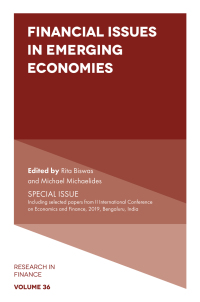Question
both example: Example1: A U.S.-based MNC has the following cash flows to and from the euro zone and Japan that are due in three months.
both example:
Example1: A U.S.-based MNC has the following cash flows to and from the euro zone and Japan that are due in three months.
Currency Cash inflows Cash outflows Net cash flows Exchange rate Dollar value
Euro 300 million 200 million +100 million $1.3260/ $132.60 m
Yen 30 billion 17.6 billion +12.4 billion 93.40/$ $132.76 m
In the example above, the MNC is exposed to $132.6 million worth of exposure to the euro (inflow) and $132.76 million worth of exposure to the yen, both inflows. The MNC seems to have a large total exposure. However, if the euro and the yen prices are perfectly negatively correlated the exposure will almost exactly cancel out and the MNC would have no total exposure. The same would be true of one of the net exposures is an outflow and the other is an inflow and the currencies are perfectly positively correlated.
Example2: to provide the British company with consulting services over a three-month period that entails payments in British pound. The current dollar value of the contract is $128 million. At the same time the U.S. company signs a three-month contract with another British company to buy supplies for three- month delivery and agrees to settle its bill in British pounds. The dollar value of the British pound contract is $35.744 million. At the same time, the U.S. MNC signs a contract to export $85 million worth of its finished product to Ecuador. Also, for delivery and settlement in three months (Ecuador uses the U.S. dollar as its home currency). The U.S.-based MNC is particularly worried about a high degree of uncertainty in the foreign exchange markets. So, it decides to evaluate its hedging alternatives. The following information is available:
Spot $1.1532/ Bid $1.1736/ Ask
3-month forward $1.1530/ Bid $1.1734/ Ask
6-month forward $1.1584/ Bid $1.1788/ Ask
3-month futures $1.1528/ Bid $1.1732/ Ask
90-day call option #1 $1.1632/ strike $0.0130/ premium
90-day put option #1 $1.1632/ strike $0.0100/ premium
180-day call option #2 $1.1686/ strike $0.0204/ premium
180-day put option #2 $1.1686/ strike $0.0320/ premium
90-day dollar interest rate 6.20% per annum (deposit) 7.00% per annum (loan)
90-day pound interest rate 5.60% per annum (deposit) 6.40% per annum (loan)
How does the information given in the example 2 differ from the information I started with example 1?
What do you need to do to reduce that information into something comparable to what I started example 1 with?
What specific steps in the Process of Measuring Transaction Exposure do you need in order to achieve the above objective?
How will the trading activities in the derivatives markets be different from example 1 and 2?
Step by Step Solution
There are 3 Steps involved in it
Step: 1

Get Instant Access to Expert-Tailored Solutions
See step-by-step solutions with expert insights and AI powered tools for academic success
Step: 2

Step: 3

Ace Your Homework with AI
Get the answers you need in no time with our AI-driven, step-by-step assistance
Get Started


